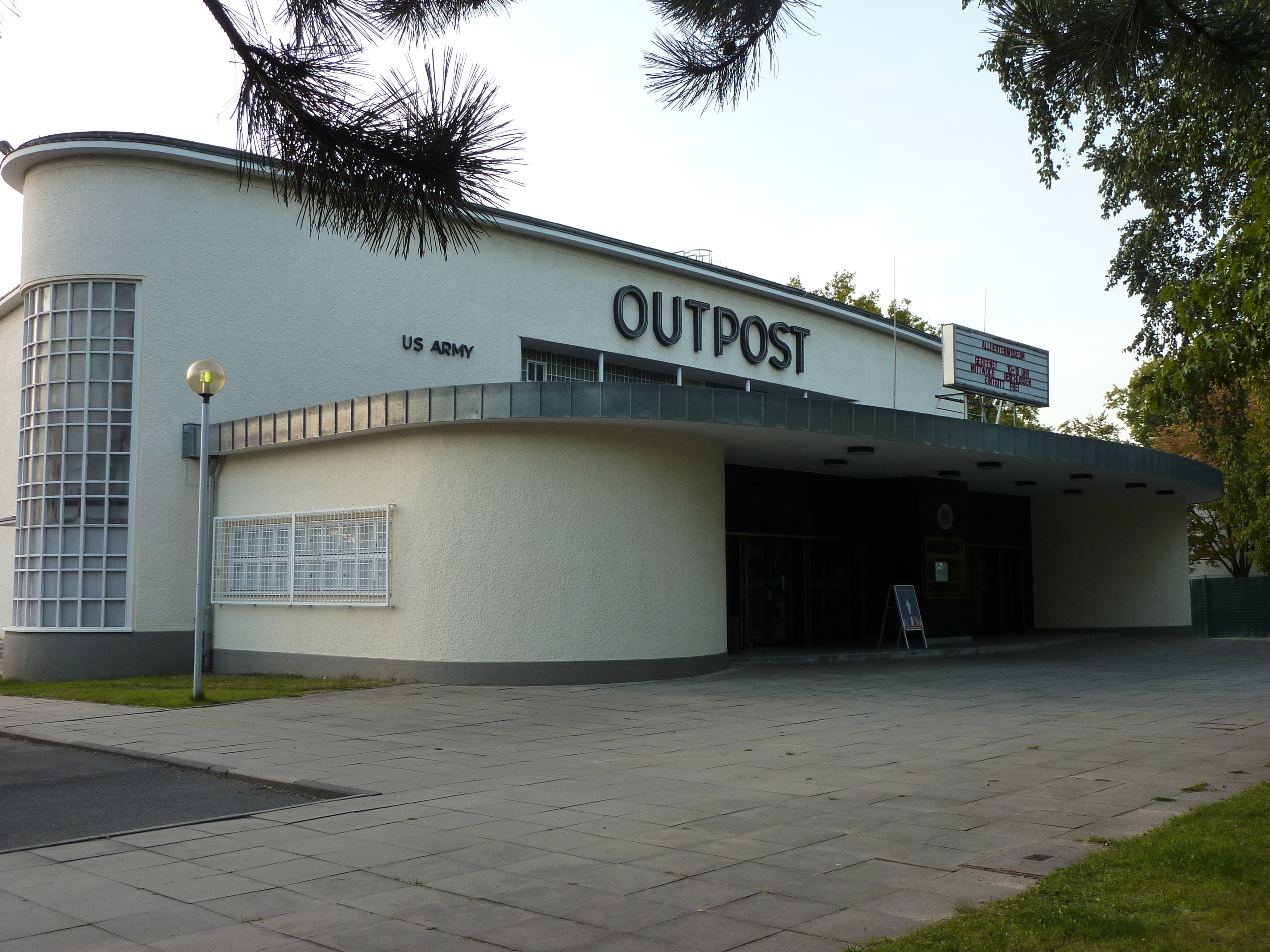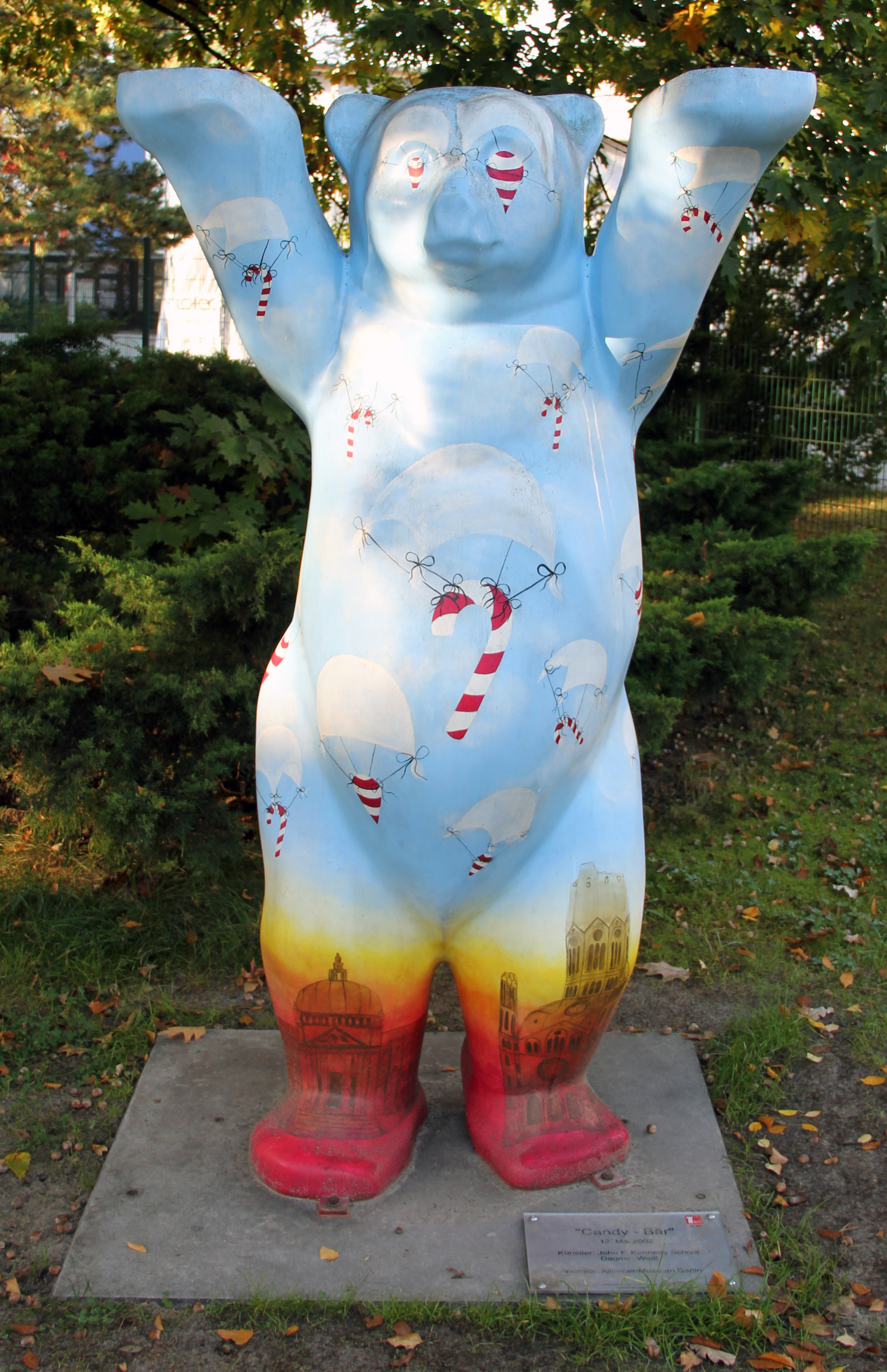Allied Museum on:
[Wikipedia]
[Google]
[Amazon]
 The Allied Museum (german: AlliiertenMuseum) is a museum in Berlin. It documents the political history and the military commitments and roles of the Western Allies ( US, France and Britain) in Germany – particularly Berlin – between 1945 and 1994 and their contribution to liberty in Berlin during the
The Allied Museum (german: AlliiertenMuseum) is a museum in Berlin. It documents the political history and the military commitments and roles of the Western Allies ( US, France and Britain) in Germany – particularly Berlin – between 1945 and 1994 and their contribution to liberty in Berlin during the
 The museum shows an important part of the military and political scenery of the Cold War in Berlin, from immediately after World War II and the final disengagement of the Allied forces in the 1990s.
The early period of partition plans evolved by the European Advisory Commission is documented. When in February 1945, the United States, Great Britain, and the Soviet Union decided to split the former German Reich in occupation zones at the Yalta Conference, including a fourth area assigned to the French, the German capital likewise was divided into four sectors. In late April, Soviet Red Army troops fought their way into the city during the
The museum shows an important part of the military and political scenery of the Cold War in Berlin, from immediately after World War II and the final disengagement of the Allied forces in the 1990s.
The early period of partition plans evolved by the European Advisory Commission is documented. When in February 1945, the United States, Great Britain, and the Soviet Union decided to split the former German Reich in occupation zones at the Yalta Conference, including a fourth area assigned to the French, the German capital likewise was divided into four sectors. In late April, Soviet Red Army troops fought their way into the city during the
 The former movie theater, a protected monument built in 1953, houses a collection of Berlin maps with planned sectors, pictures of Red Army forces marching into Berlin, uniforms, the first post-war editions of Berlin newspapers,
The former movie theater, a protected monument built in 1953, houses a collection of Berlin maps with planned sectors, pictures of Red Army forces marching into Berlin, uniforms, the first post-war editions of Berlin newspapers,

 Some of the largest objects in the permanent collection are presented in the open-air exhibition space and include a
Some of the largest objects in the permanent collection are presented in the open-air exhibition space and include a
 In the former library building, documents are shown concerning every-day life of the Allied garrisons, the political situation under Cold War terms until the fall of the Wall, as well as methods to analyze the measures by the USA, Great Britain and France to guarantee liberty in West Berlin. The collections include the reconstruction of an espionage tunnel built during the Operation Gold conducted by the American and British intelligence services in 1955. Part of the hall is reserved for temporary exhibitions on themes of modern-day relevance.
In the former library building, documents are shown concerning every-day life of the Allied garrisons, the political situation under Cold War terms until the fall of the Wall, as well as methods to analyze the measures by the USA, Great Britain and France to guarantee liberty in West Berlin. The collections include the reconstruction of an espionage tunnel built during the Operation Gold conducted by the American and British intelligence services in 1955. Part of the hall is reserved for temporary exhibitions on themes of modern-day relevance.
Website
{{Authority control Museums in Berlin History museums in Germany Buildings and structures in Steglitz-Zehlendorf Museums established in 1998 Cold War museums in Germany
 The Allied Museum (german: AlliiertenMuseum) is a museum in Berlin. It documents the political history and the military commitments and roles of the Western Allies ( US, France and Britain) in Germany – particularly Berlin – between 1945 and 1994 and their contribution to liberty in Berlin during the
The Allied Museum (german: AlliiertenMuseum) is a museum in Berlin. It documents the political history and the military commitments and roles of the Western Allies ( US, France and Britain) in Germany – particularly Berlin – between 1945 and 1994 and their contribution to liberty in Berlin during the Cold War
The Cold War is a term commonly used to refer to a period of geopolitical tension between the United States and the Soviet Union and their respective allies, the Western Bloc and the Eastern Bloc. The term '' cold war'' is used because the ...
era.
Location: American Sector
The museum is located on Clayallee, an arterial road named after General Lucius D. Clay (1898–1978), in the Dahlem quarter of the southwesternSteglitz-Zehlendorf
Steglitz-Zehlendorf () is the sixth borough of Berlin, formed in Berlin's 2001 administrative reform by merging the former boroughs of Steglitz and Zehlendorf.
Home to Free University of Berlin, the Berlin Botanical Garden, and a variety of mu ...
borough. Until German reunification
German reunification (german: link=no, Deutsche Wiedervereinigung) was the process of re-establishing Germany as a united and fully sovereign state, which took place between 2 May 1989 and 15 March 1991. The day of 3 October 1990 when the Ge ...
in 1990, the area was located in the American sector of postwar West Berlin. The buildings near the US Army headquarters then housed an American movie theater, called ''Outpost'', and the Nicholson Memorial Library. The museum was inaugurated in 1998, on the fiftieth anniversary of the Berlin airlift, in the presence of Chancellor Helmut Kohl. Entrance is free.
Since the closure of Berlin Tempelhof Airport
Berlin Tempelhof Airport (german: Flughafen Berlin-Tempelhof) was one of the first airports in Berlin, Germany. Situated in the south-central Berlin borough of Tempelhof-Schöneberg, the airport ceased operating in 2008 amid controversy, leav ...
in 2008, the Allied Museum has announced its interest in relocating to the old airport at some point.
The Allies
Battle of Berlin
The Battle of Berlin, designated as the Berlin Strategic Offensive Operation by the Soviet Union, and also known as the Fall of Berlin, was one of the last major offensives of the European theatre of World War II.
After the Vistula– ...
and enforced the unconditional surrender by the German Wehrmacht armed forces. In Summer they pulled out from the city's Western sectors according to the agreements concluded.
In the beginning East-West conflict, first marked by the withdrawal of the Soviet representatives from the Allied Kommandatura and the following Berlin Blockade in 1948–49, the US, Britain and France formed the Western Allies and came in opposition to the Soviet occupation forces. The increasing tensions culminated in the Berlin Crisis of 1961
The Berlin Crisis of 1961 (german: Berlin-Krise) occurred between 4 June – 9 November 1961, and was the last major European politico-military incident of the Cold War about the occupational status of the German capital city, Berlin, and of po ...
and the building of the Berlin Wall
The Berlin Wall (german: Berliner Mauer, ) was a guarded concrete barrier that encircled West Berlin from 1961 to 1989, separating it from East Berlin and East Germany (GDR). Construction of the Berlin Wall was commenced by the government ...
. A significant step towards the easing of tensions was made in the 1971 Four Power Agreement on Berlin
The Four Power Agreement on Berlin, also known as the Berlin Agreement or the Quadripartite Agreement on Berlin, was agreed on 3 September 1971 by the four wartime Allied powers, represented by their ambassadors. The four foreign ministers, Ale ...
, until the "Berlin question" was solved after the East German Peaceful Revolution
The Peaceful Revolution (german: Friedliche Revolution), as a part of the Revolutions of 1989, was the process of sociopolitical change that led to the opening of East Germany's borders with the West, the end of the ruling of the Socialist Unity ...
and the fall of the Berlin Wall on 9 November 1989.
Exhibition
Outpost Theater: From victory to airlift
 The former movie theater, a protected monument built in 1953, houses a collection of Berlin maps with planned sectors, pictures of Red Army forces marching into Berlin, uniforms, the first post-war editions of Berlin newspapers,
The former movie theater, a protected monument built in 1953, houses a collection of Berlin maps with planned sectors, pictures of Red Army forces marching into Berlin, uniforms, the first post-war editions of Berlin newspapers, denazification
Denazification (german: link=yes, Entnazifizierung) was an Allied initiative to rid German and Austrian society, culture, press, economy, judiciary, and politics of the Nazi ideology following the Second World War. It was carried out by remov ...
documents, CARE packages. Particular emphasis is on logistics and sacrifices of life by the British-American airlift to West Berlin.Allied Museum (Editor): ''Guide to the Indoor and Open-Air Exhibition Spaces.'' Folder in English from about 2011. Lectures and screenings are held regularly.
Open-Air: Aircraft and watchtower

 Some of the largest objects in the permanent collection are presented in the open-air exhibition space and include a
Some of the largest objects in the permanent collection are presented in the open-air exhibition space and include a Handley Page Hastings
The Handley Page HP.67 Hastings is a retired British troop-carrier and freight transport aircraft designed and manufactured by aviation company Handley Page for the Royal Air Force (RAF). Upon its introduction to service during September 1948, ...
transport plane deployed by the Royal Air Force in the Berlin airlift, a railway carriage from a French military train, the last guard house from the famous Berlin Checkpoint Charlie border crossing, and a rebuilt East German watchtower.
Nicholson Memorial Library: Privileged position of Berlin
Organization
The Allied Museum has the legal status of a non-profit association, whose members are the Federal Republic of Germany, the state of Berlin, France, the UK and the US, as well as the Deutsches Historisches Museum, and the Institut für Zeitgeschichte in Munich.Sculpture ''The Day the Wall Came Down''
Near the Allied Museum, in Clayallee, the 1998 sculpture '' The Day the Wall Came Down'' by Veryl Goodnight remembers the joyous event of November 9, 1989, when the Berlin Wall was effectively neutralized. Five wild horses are shown jumping over actual remains of the wall. A statue of General Friedrich Wilhelm von Steuben stands nearby.See also
*German-Russian Museum
The Museum Berlin-Karlshorst, previously named ''German-Russian Museum Berlin-Karlshorst'' (Deutsch-Russisches Museum Berlin-Karlshorst) is dedicated to German-Soviet and German-Russian relations with a focus on the German-Soviet war of 1941–1 ...
* List of museums and galleries in Berlin
Active museums
This is a list of museums and non-commercial galleries in Berlin, Germany.
Defunct museums
References
External links Museumsportal Berlin
Notes
*External links
Website
{{Authority control Museums in Berlin History museums in Germany Buildings and structures in Steglitz-Zehlendorf Museums established in 1998 Cold War museums in Germany